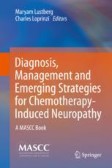Search
Search Results
-
Chemotherapy-induced neutropenia as a prognostic factor in patients with extensive-stage small cell lung cancer
PurposeChemotherapy-induced neutropenia (CIN) is a dose-limiting factor for cytotoxic chemotherapy, but recently, it was suggested that CIN...

-
Efficacy and safety of PEG-rhG-CSF versus rhG-CSF in preventing chemotherapy-induced-neutropenia in early-stage breast cancer patients
BackgroundTo compare the clinical value of recombinant human granulocyte colony-stimulating factor (rhG-CSF) and pegylated rhG-CSF(PEG-rhG-CSF) in...

-
Chemotherapy-induced neutropenia and treatment efficacy in advanced non-small-cell lung cancer: a pooled analysis of 6 randomized trials
BackgroundChemotherapy-induced neutropenia (CIN) has been demonstrated to be a prognostic factor in several cancer conditions. We previously found a...

-
“Moderate” adjuvant chemotherapy-induced leukopenia is beneficial for survival of patients with early breast cancer: a retrospective study
BackgroundThe association between chemotherapy-induced leukopenia (CIL) and survival for patients with early breast cancer (EBC) is not known. We...

-
Evaluation of Chemotherapy-Induced Peripheral Neuropathy
Measurement of chemotherapy-induced neuropathy can be based on patient report, clinician report, or objective assessment of nerve function. In this...
-
Early onset neutropenia: a useful predictor of chemosensitivity and favorable prognosis in patients with serous ovarian cancer
BackgroundEpithelial ovarian cancer (EOC) is the leading cause of gynecological cancer-associated deaths and a majority of its histological type is...

-
Prevalence of blood stream infections and associated factors among febrile neutropenic cancer patients on chemotherapy at Ocean Road Cancer Institute, Tanzania
BackgroundFebrile Neutropenia (FN) caused by bacteria in cancer patients is associated with poor prognosis. The aim of this study was to determine...

-
Current Treatment of Febrile Neutropenia
Chemotherapy-induced neutropenia (CIN) is a common side effect of anticancer drugs used for treatment of solid tumors. Neutropenic cancer patients...
-
Quantification of Radiation Injury on Neutropenia and the Link between Absolute Neutrophil Count Time Course and Overall Survival in Nonhuman Primates Treated with G-CSF
PurposeTo model absolute neutrophil count (ANC) suppression in response to acute radiation (AR) exposure and evaluate ANC time course as a predictor...

-
Therapeutic Implications of CDKs in Breast Cancer
CDKs require modulatory subunits to bind them, known as cyclins, to exert their effects. The latter are formed and destroyed at various cell cycle...
-
Potential anticancer properties and mechanisms of thymoquinone in colorectal cancer
Colorectal neoplasms are one of the deadliest diseases among all cancers worldwide. Thymoquinone (TQ) is a natural compound of Nigella sativa that...

-
Malaria and Cancer: a critical review on the established associations and new perspectives
ObjectivesCancer and malaria both have high incidence rates and are leading causes of mortality worldwide, especially in low and middle-income...

-
New insights for gynecological cancer therapies: from molecular mechanisms and clinical evidence to future directions
Advanced and recurrent gynecological cancers lack effective treatment and have poor prognosis. Besides, there is urgent need for conservative...

-
Extrapolation in Practice: Lessons from 10 Years with Biosimilar Filgrastim
Biosimilar filgrastim (Sandoz) was approved in Europe in 2009 and, in 2015, was the first biosimilar approved in the USA. These authorizations were...
-
CDKs in Cell-Cycle Progression and Therapeutic Strategies in Human Breast Cancer
One of the deadly diseases in terms of incidence and mortality among females is breast cancer (BC), it is escalating at an alarming rate having...
-
Metal Nanoparticles in the Field of Medicine and Pharmacology
One of the cutting-edge technologies that hold considerable promise for both medical and non-medical applications is metal nanoparticles. Metal...
-
Efficacy and Safety of Supportive Care Biosimilars Among Cancer Patients: A Systematic Review and Meta-Analysis
BackgroundBiologics are widely used to manage the side effects of cancer treatment (e.g., epoetin alfa is used to treat chemotherapy-induced anemia...

-
Cancer Therapy
Current cancer therapy is based on surgery, radiotherapy, chemotherapy, and immunotherapy, often administered in combination. Cytotoxic chemotherapy...
-
Chemotherapy-induced neutropenia as a prognostic factor in patients with metastatic pancreatic cancer treated with gemcitabine
PurposeChemotherapy-induced neutropenia (CIN) is a common side effect of chemotherapy and an important dose-limiting factor. However, an association...

-
Safety of Marketed Cancer Supportive Care Biosimilars in the US: A Disproportionality Analysis Using the Food and Drug Administration Adverse Event Reporting System (FAERS) Database
BackgroundSince the approval and availability of the first biosimilar in 2015 in the United States (US), evidence regarding the post-marketing safety...

